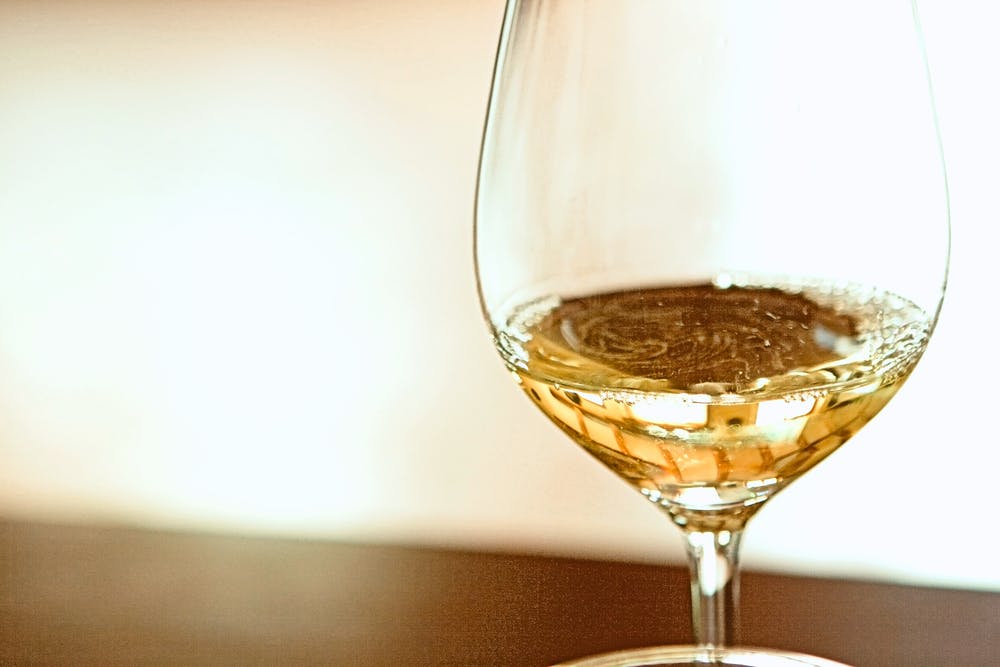Still, sparklink and liqueur wines
Still wines
In the Czech Republic, similar to in Austria and Germany, the so-called Germanic system for classifying wines according to the minimum sugar content present in the grape juice at harvest is used.

Wine with protected geographical denomination
Land wine
Land wine is produced solely from grapes whose origin is the Czech Republic. These go under the titles "Moravian Land Wine" or "Bohemian Land Wine" and may moreover be labelled with the vintage and name of the grape variety. Must-weight level at harvest must reach a minimum 14°NM.
Wine with protected denominatíon of origin
Quality wine
For the production of quality wine only local grapes of varieties listed in the State Register of Grape Varieties or else grapes permitted in any of the member states of the European Union, originating from vineyards suitable for the production of quality wine from a single wine region. The production of the wine must take place in the same wine region in which the grapes were harvested. Must-weight level of the grapes must reach a minimum 15°NM.
For the production of quality wine only local grapes of varieties listed in the State Register of Grape Varieties
Quality wine with special attributes (Wein mit Prädikat)
Grapes for its production must fulfil all the requirements for the production of quality wine. Furthermore they must originate from one single wine sub-region and the origin of the grapes, their sugar level, weight, grape variety or blend of varieties must be verified by the State Agricultural and Food Inspectorate. The must-weight levels of a quality wine with special attributes must not be enriched.
Types of individual attributes
Kabinet wine
The category of wines produced from grapes having a must-weight of a minimum 19°NM. These are lighter, dry, pleasantly drinkable wines.
Late harvest
Wines whose grapes achieved a minimum must-weight level at harvest of 21°NM. These are full, extractive, dry or semi-dry wines.
Special selection of grapes
Wines produced from grapes which ripened to a minimum of 24°NM. These are wines which are full, extractive, with a higher alcohol content, sometimes with a higher content of residual sugar.
Special selection of berries
Wines produced from grapes that ripened over a very long period on the vine and whose must-weight level had achieved at least 27°NM. These are very round, extractive, semi-sweet or sweet wines.
Ice wine
Made from grapes frozen on the vine picked at a maximum temperature of -7°C. The must-weight levels must achieve at least 27°NM. Grapes must not defrost during the pressing process, thus a part of the water remains unpressed in the grapes in the form of ice crystals and during the pressing the must becomes highly concentrated. Ice wines are highly extractive and sweet.
Straw wine
Wines made of grapes that were dried for at least three months on straw mats or reed beds or else hung in a well-ventilated space. In this way part of the water evaporates and so concentrates the content of extractive substances. The resulting must-weight levels must be of at least 27°NM. Pressing of grapes may already take place after two months provided that the must-weight levels have reached 32°NM. Straw wines are very extractive and sweet.
Special selection of botrytised berries
Wines produced from selected berries that have been attacked by noble rot or from overripe berries that reached a minimum must-weight level of 32 °NM. Thanks to the extremely long ripening time the majority of these berries turn into raisins. They give very extractive and sweet wines.
Categories of still wines according to the content of residual sugar
Dry
- A wine which fermented to dryness and its residual sugar content is not exceeding:
- max. 4 g residual sugar per litre or
- max. 9 g residual sugar per litre should the difference in residual sugar and the total acidity content converted into tartaric acid be 2 grams or less.
Semi-dry
- To be labelled as a semi-dry wine it must contain:
- max. 12 g residual sugar per litre or
- max. 18 g residual sugar per litre should the difference in residual sugar and the total acidity content converted into tartaric acid be 10 grams or less.
Semi-sweet
- The residual-sugar content in the wine is greater that the highest value stipulated for semi-dry wines, but reaches a maximum of 45 g per 1 litre.
Sweet
- According to the legislative regulations this is a wine with a residual-sugar content of at least 45 g per litre.
Sparkling wine
Sparkling wine is made through primary or secondary alcoholic fermentation of grape juice or wine. Upon opening the vessel sparkling wine is characterised by the escape of the carbon dioxide created exclusively through the process of fermentation.
Quality sparkling wine - sekt
For the production of the cuvée only grapes corresponding to the definition of quality wine production or quality wine itself have been used.
Quality sparkling wine from a designated region - sekt s.o.
For the production of the cuvée only the grapes grown in the same wine region from vineyards suitable for quality wine production from a designated region were used. The vinification process took place in the same wine region in which the grapes were harvested and the maximum permitted yields per hectare were not exceeded.
Growers‘ sekt
Sparkling wine that fulfils specific conditions, e.g. that the production was undertaken on the premises of the same grape grower whose grapes were used for the production of the sekt.
For the production of the cuvée only grapes grown in the same wine region from vineyards suitable for quality wine production from a designated region were used.
Aromatic quality sparkling wine
In its production only a primary fermentation was undergone. The cuvée is made from the grape varieties corresponding to the specified regulations and the wine complies with the quality requirements.
Aromatic quality sparkling wine from a designated region – aromatic sekt s.o.
For the production of the cuvée only grapes grown in the same wine region from vineyards suitable for quality wine production from a designated region were used. The vinification process took place in the same wine region in which the grapes were harvested, the maximum permitted yields per hectare were not exceeded and the wine fulfils the quality criteria requirements. In its production only a primary fermentation was undergone.

Semi-sparkling wine
A product which was made from wine, quality wine or from products suited to the production of table wine or quality wine, provided that those wines or products show a total minimum alcohol content of 9% alc. by vol. and show a minimum real alcohol content of 7% alc. by vol.
Semi-sparkling wine made by carbonation
A product which is made from wine, quality wine s.o. or from products suited to producing table wines or quality wines s.o, which shows a total minimum alcohol content of 7% alc. by vol. and show a minimum real alcohol content of 9% alc. by vol.
Quality semi-sparkling wine
Is produced from grapes harvested in the same wine region from vineyards suitable for the production of quality wine of the designated region, the vinification took place in the wine region in which the grapes were harvested, the maximum permitted yields per hectare were not exceeded and the wine fulfils the quality criteria requirements.
The classification of sparkling and semi-sparkling wines by residual sugar
- "brut nature": fewer than 3 g of sugar/litre (sugar was not added after the secondary fermentation)
- "extra brut": sugar content between 0 and 6 g/litre
- "brut": sugar content lower than 12 g/litre
- "extra dry" –"extra sec": sugar content between 12 and 17 g /litre
- "sec" - "dry": sugar content between 17 and 32 g/litre
- "demi-sec" – "medium-sec": sugar content between 32 and 50 g/litre
- "doux" – "sweet": sugar content higher than 50 g/litre
Liqueur wine
Liqueur wine is a product which shows a real alcohol content of 15% to 22% alc. by vol. and a total minimum alcohol content of 17.5% alc. by vol. It has to have been attained from partly fermented grape juice and/or from wine to which grape spirit has been added or from products made from the grapevine and grape must “süssreserve“.
Quality liqueur wine
Liqueur wine made from grapes harvested in the same wine region from a vineyard suitable for quality wine production in the designated region, the vinification took place in the wine region in which the grapes were harvested, the maximum permitted yields per hectare were not exceeded and the wine fulfils the quality criteria requirements.